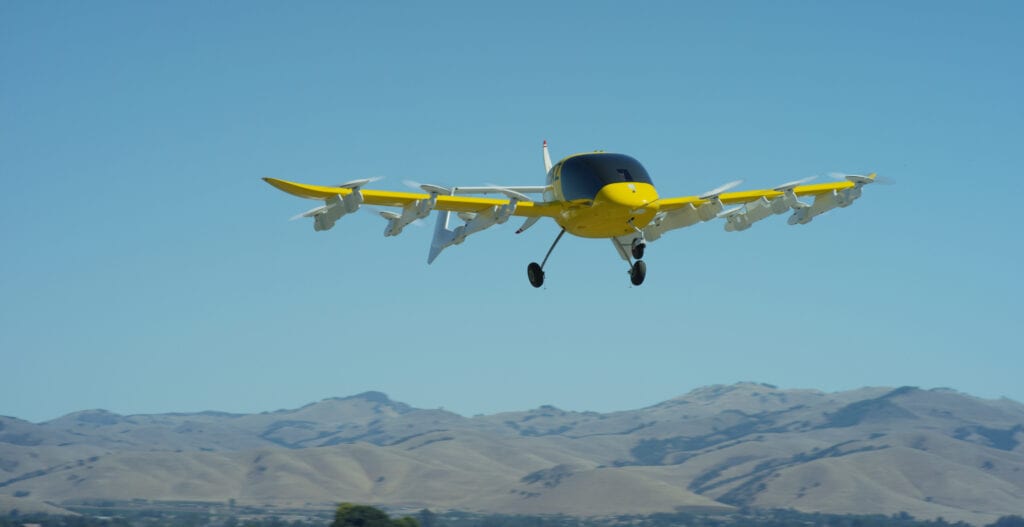
Urban Air Mobility (UAM) all-electric autonomous air taxi creator, Wisk, is partnering with the National Aeronautics and Space Administration (NASA) to create safe solutions for autonomous air vehicle integration into the national airspace. (Wisk)
The first advanced air mobility (AAM) aircraft type certification from the Federal Aviation Administration (FAA) could come as soon as this year, Jay Merkle, executive director of the FAA unmanned aircraft systems (UAS) office, said during the Vertical Flight Society’s 2021 Autonomous VTOL Technical Meeting and Electric VTOL Symposium on Jan. 26.
“Based on where we see projects, probably our first UAM/AAM aircraft to get certified will happen sometime this year and we've got probably two or three others right behind,” Merkle said. “And based on those companies’ projections, they really want to begin operations by 2023. Those are more testing and operations and then really commercial for-fee services around 2024.”
Merkle did not share specifics about which aircraft was close to certification. The FAA’s definition of AAM is intentionally broad to include a range of different aircraft. This includes what was previously referred to as urban air mobility aircraft.
“We made the transition away from Urban Air Mobility to Advanced Air Mobility, to ensure that we were covering all of the concepts that people were bringing to us, that includes commercial inner city, long-range, intra-city, cargo delivery, public services, and then private and recreational vehicles.”
The FAA is working with over 30 AAM companies with varying aircraft and engine types including electric.
The FAA is not going to be certifying AAM aircraft like UAS, but they will be taking some knowledge from the UAS space to integrate into the AAM aircraft certification standards, Merkle said. “These standards will have to be open to multiple concepts because of the wide variety of aircraft in this space and have different qualifications for pilots, training, and maintenance. Ultimately, however, they will be following part 21 and part 23 type certification though.
“We believe the societal expectations for those aircraft are that they operate like any other part 21 or part 23 aircraft with part 91 operation, and that's where we're headed,” Merkle said. “So we're not treating those like UAS, but what we've seen is learn some things in the UAS space that we're applying.”
One big complication when certifying these aircraft is their level of automation. Some aircraft will include features like detect and avoid technology or be piloted autonomously.
“Functions that are traditionally done by an airman such as, detect and avoid, or see and avoid in the case of a UAS, are now being done by the aircraft…Many of the pilot functions in managing the aircraft will now be done by aircraft exclusively and so this also creates a difference in how you interact with the airspace,” Merkle said. “But whether the pilot or is onboard or off-board, these changes in boundaries create a number of complexities for us in moving through our regulatory infrastructure.”
Merkle said an area where he would like to see improvement is more focus on airworthiness.
“There has not been sufficient emphasis on airworthiness in terms of civil operations in that community, and we've had a very strong message recently, of trying to get more and more companies to go through the airworthiness process that we have,” Merkle said. “We've made some great policy changes to make it easier and more scalable to them.”
The FAA is focused on moving towards performance-based regulation that is heavily dependent on consensus standards, Merkle said. This will require the FAA, industry, the public to collaborate as the standards are developed.
“We were trying to work with industry to get clarity around standardization and coalesce around vehicle characteristics and this really becomes a workload issue for the FAA,” Merkle said. “If industry asks the FAA to work on 15 to 20, very different designs, that will take a tremendous amount of resources, if we can create some patterns around designs and create some commonality and standardization around designs.”
The FAA has to work within its current regulatory structure when certifying these aircraft. Merkle said so far they have not seen any major obstacle on this structure that would prevent AAM operations.
However, as these operations move forward Merkle said more impediments will come up.
“We realized as the operations get more and more advanced, we will probably have additional challenges,” Merkle said. “One of the challenges that is aligned with this, but is somewhat separate, is the whole area of airspace integration and equity. I think this is going to be a big challenge for this community, because the traditional operators in this airspace will not easily yield their positions.”
"type" - Google News
January 27, 2021 at 05:19AM
https://ift.tt/3poKWMK
First FAA Type Certification for Advanced Air Mobility Aircraft Could Come This Year - Aviation Today
"type" - Google News
https://ift.tt/2WhN8Zg
https://ift.tt/2YrjQdq
Bagikan Berita Ini














0 Response to "First FAA Type Certification for Advanced Air Mobility Aircraft Could Come This Year - Aviation Today"
Post a Comment